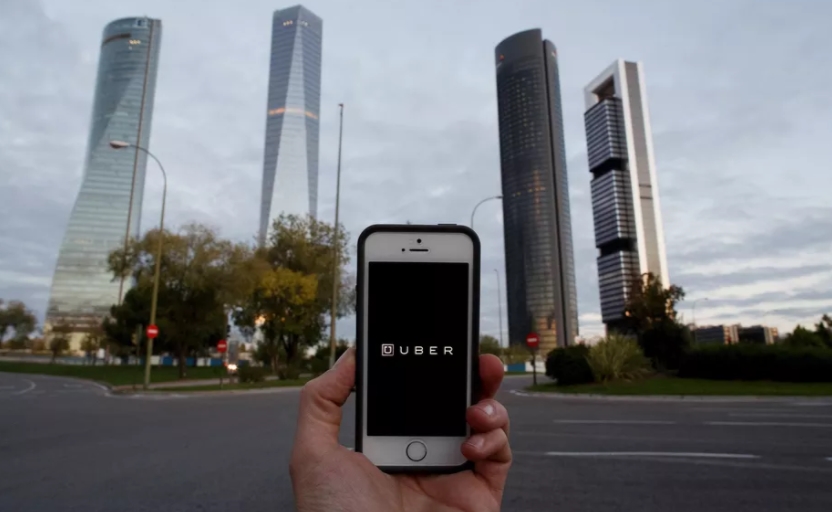
Uber is beginning to roll out a cheaper version of its ride-sharing UberPool service, called Express Pool. The service, which was being tested in Boston and San Francisco, is now available in Los Angeles, San Diego and Denver, and will launch in Miami, Philadelphia and Washington, D.C., tomorrow.
The idea is that Express Pool, which requires riders to walk a little to meet their driver — and then again to their destination after being dropped off — will make shared rides more efficient. If it works, it should both increase the number of rides that drivers can give and also make those shared trips faster for passengers.
The new service tests a thesis Uber has long had: Lower prices means higher utilization, and higher utilization means more money — both for drivers and for Uber. Also that road congestion is bad and the solution is to share more rides.
Those are the same theories that sparked the creation of the original UberPool service, which requires a little less walking. But the hope is that this will make it easier to match more passengers and therefore lose less money on each shared ride.
How does it work for riders?
After selecting Express Pool, riders will wait to be matched with another passenger. Then they walk to the pickup point, join any passengers they’ve been matched with along the way, and get dropped off in the vicinity of their destination and walk the rest of the way there.

None of those points are fixed, and even if you take the same trip every day, there’s no guarantee that the pickup or drop-off locations will be the same, because it depends on who you’re matched with.
Because the company expects utilization to go up, and because you have to do a little bit more work, rides will be up to 30 percent cheaper than regular UberPool rides.
How does it work for drivers?
It should work roughly the same as UberPool, with one exception. Before dropping off the rider, drivers will be notified that the passenger will walk to their destination.
However, some drivers who have already tried Express Pool in Boston and San Francisco have complained that passengers either don’t understand that it’s not a door-to-door service, or they still insist on being picked up or dropped off in front of their location.
“It’s much more effort, many of the intersections Uber chooses as a good Express pickup location are very dangerous, and there is no good spot to safely pull over and pick up the passenger,” Thad, a Boston driver who has been working on the Uber platform since September 2017, told Recode. “It’s more effort, more headache, more potential for complications and a bad rating over things the driver has no control of.”
Drivers are still being pay per-mile and per-minute in addition to a base fare, as well as a fee they receive per pickup — so it’s entirely decoupled from what riders pay. Uber also recently rolled out ratings protection so drivers could not be penalized for things out of their control — such as traffic or bad navigation.
What’s the upside for Uber?
Higher utilization is good for Uber, period. Uber’s network will be more efficient if the supply of drivers on Uber’s platform are giving more rides. The company also expects that it will help decrease how much is spent on subsidizing these rides.
When calculating the upfront price of rides, Uber takes into account things like the expected time and distance, as well as the likelihood that a rider will be matched with another passenger on shared rides.
If the company predicts that you will be matched with a rider, for example, it may charge you $4, with the expectation that the total fare will be $8. That doesn’t always happen, however, which causes the company to lose money on those rides. With the new Express Pool service — for which Uber has built a completely new back end that determines a shared route with you and other passengers — the company expects to be able to predict whether you get a match with more certainty.
It stands to reason that since it’s not door-to-door, it should be easier to determine routes that work for multiple passengers.
Lastly, this could be a big opportunity for self-driving cars. Driverless cars don’t have to stop, so this will further increase utilization. Think about it: With Express Pool, Uber driverless cars will be able to continuously pick up multiple passengers quickly and efficiently without splitting the profits with the driver.
Is Uber trying to replace public transit?
Uber CEO Dara Khosrowshahi recently said he wanted the company to run city bus systems, but there are obvious downsides to depending on a private company to provide a public utility. Some could argue that Express Pool is the company’s first official attempt at getting into micro-transit.
Though many people compare services like Express Pool to buses, it works a lot more like existing on-demand shuttle services like Via or even Chariot — except Chariot operates fixed routes based on demand along those routes. With ExpressPool, everything is dynamic, from routes to passengers to prices.
The logical next step for Uber ExpressPool is to use more SUVs and other vehicles that could fit more passengers, the way that Via does. But it’s unlikely that this service could replace bus systems anytime soon, because it’s hard to see how privately owned vehicles will be able to meet the demands of public transit, and profitably at that.
The bigger opportunity is in filling the gaps of transit systems, according to Sarah Kaufman, the assistant director for technology programming at the NYU Rudin Center for Transportation.
“If cities start to see these services as better fits for low-ridership bus routes, especially late at night, passengers will benefit from more direct service and lower costs for transportation managers,” Kaufman told Recode.

